So you're in the market for a new bathroom sink. While shopping, you notice some of the sinks have an overflow and some do not. Which makes you wonder, do bathroom sinks always need an overflow? We researched this to get you the very best answer!
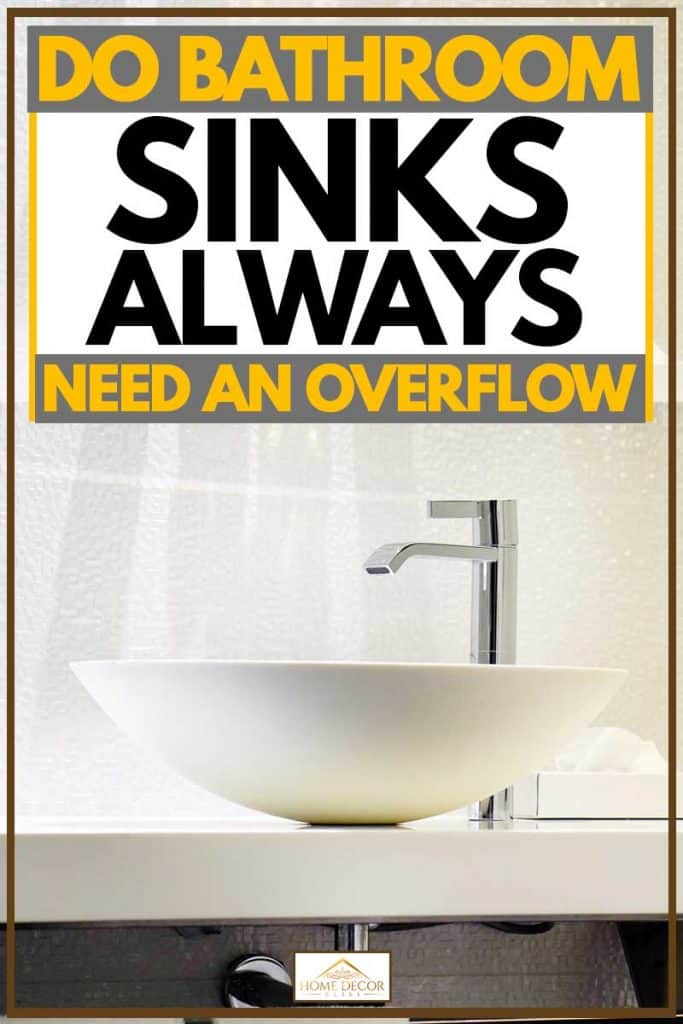
No, bathroom sinks do not necessarily need an overflow valve. The overflow serves two purposes, it diverts water back to the drain pipe and it improves drainage speed. However, even with an overflow, you should never walk away from a running faucet if you don't want to risk water on the floor.
We'll look at a variety of different bathroom sinks in this post so you can get a solid grasp on what you need for your space. We will also answer the same question for bathtubs later in the post.
What Is A Sink Overflow?
A sink overflow is a small hole on the backside of the sink. It serves two purposes. The first is to divert rising water back into the drainpipe so that your sink doesn't overflow. Water will rise in your sink and when it reaches the level of the overflow hole will flow into it and back down to the drain. The overflow also helps your drains work more efficiently when the sink is not too full, as it allows air into the plumbing pipes.
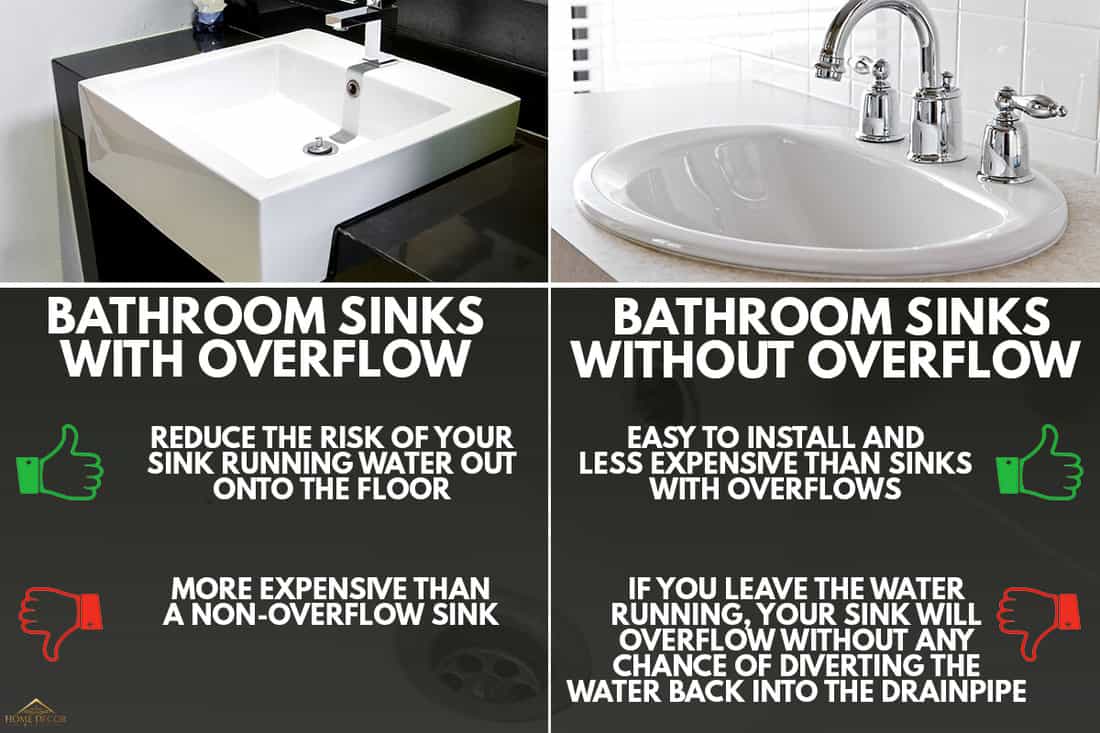
We may include affiliate links and curated AI content to highlight top design styles.
The pros of a sink with the overflow are you reduce the risk of your sink running water out onto the floor. The con is the cost. Overflow sinks and the drains are more expensive than a non-overflow sink.
Pros of a non-overflow sink are that they are easy to install and less expensive than sinks with overflows. The cons are that if you walk away and leave the water running, your sink will overflow without any chance of diverting the water back into the drainpipe.
Bathroom Sinks With Overflows
This classic porcelain sink is made for a single faucet fixture and comes with an overflow hole. The overflow hole is the small round hole at the back of the sink. This vessel type sink sits above the countertop for a contemporary stylish feel.
Click here to see this sink on Amazon.
Here's an example of a drop-in type bathroom sink with an overflow hole. In this case, the overflow is the rectangular slit you see at the rear of the sink. There are no holes for faucets in this sink because they would be cut into the counter itself.
Click here to see this sink on Amazon.
This compact design corner sink would be mounted directly into the wall of a small bathroom without a cabinet or pedestal. It does have an overflow valve which is finished off with a metal finish piece.
Click here to see this sink on Amazon.
Bathroom Sinks Without Overflow Valves
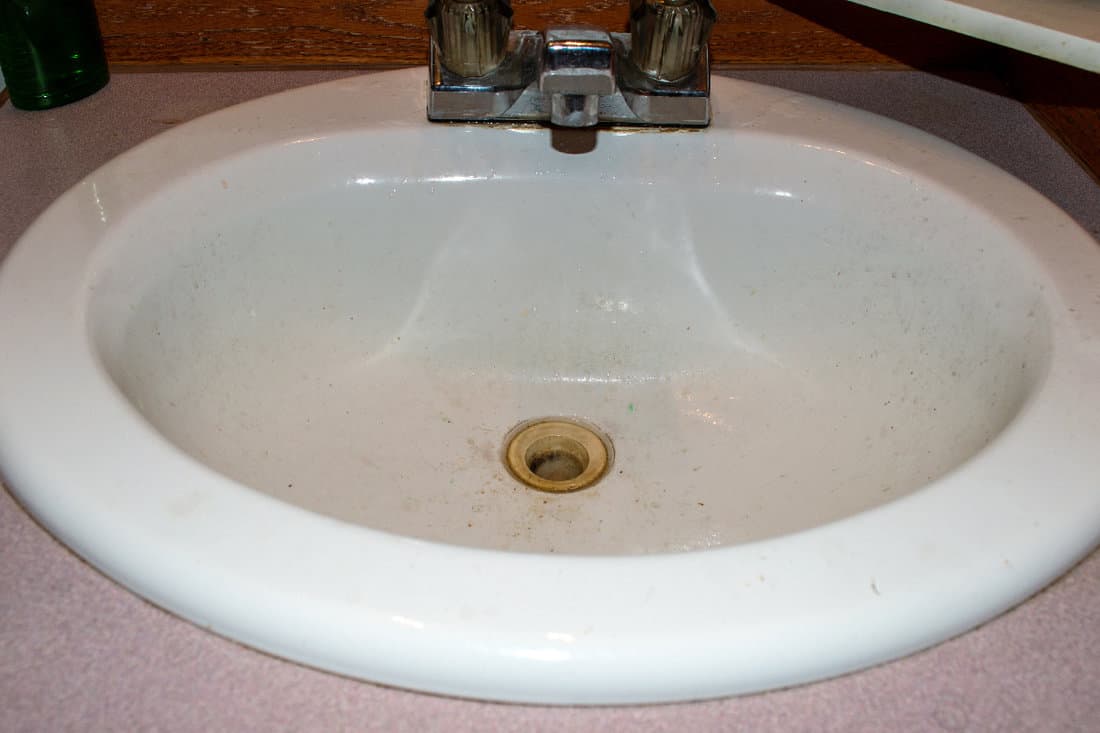
This minimalist design from Kohler from the Vox series does not have an overflow valve. The shallow nature of the sink doesn't allow for the build-up of water. It does have a hole for the single handle faucet on the back lip of the raised vessel sink.
Click here to see this sink on Amazon.
Round basins like this one have become popular over the past couple of years. They mimic washbasins of old and work beautifully if you're restoring an old wardrobe to act as your kitchen vanity. They can be found in traditional porcelain, as seen here, but are also found in colored glass, ceramics, even carved epoxied woods. Fun fact, U.S. building codes don't require overflows on bathroom sinks which is why we have a choice between the two types.
This gorgeous hammered copper sink basin without overflow hole can be dropped in or raised up on your bathroom counter. But don't walk away from this vanity sink with the water running because, without an overflow, the shallow basin could spill the water over to your floor, no matter how gorgeous it is.
Why Do Bathroom Sinks Have A Hole?

You're looking at sinks online and you see all sorts of holes drilled into them. What are they for? Well, as we've explained, if there's a small hole, rectangular opening, even a sink-wide slit near the top interior wall, that's your overflow. The round hole in the bottom is for your drain and where your plumber will affix your plumbing drain to your sink.
Sometimes you will see holes along the top back of the sink. Other times one. Sometimes three. These are for your faucets. If there is one hole, it's for a single handle faucet.
This is a great example of a single handle faucet. The lever lifts and moves to the left or right to provide your hot or cold water. To shut it off, you simply press it back down. This particular faucet would look super with the copper sink above.
You can see it here on Amazon.
When you see three holes at the top rear of your sink basin, then you need a three-piece faucet that will come with a spout and two water handles, one for hot, and one for cold.
Click here to see this on Amazon.
This set in matte black also includes a pop-up drain cover. But as you can see a center faucet, with the water controlled by the smaller levers to left and right.
If you have a sink with three holes for the faucet but prefer the action of a single faucet, then there are faucets available with escutcheon plates to cover the additional holes but can still give you single faucet action.
Click here to see this on Amazon.
How Do I Clean My Bathroom Sink Hole?
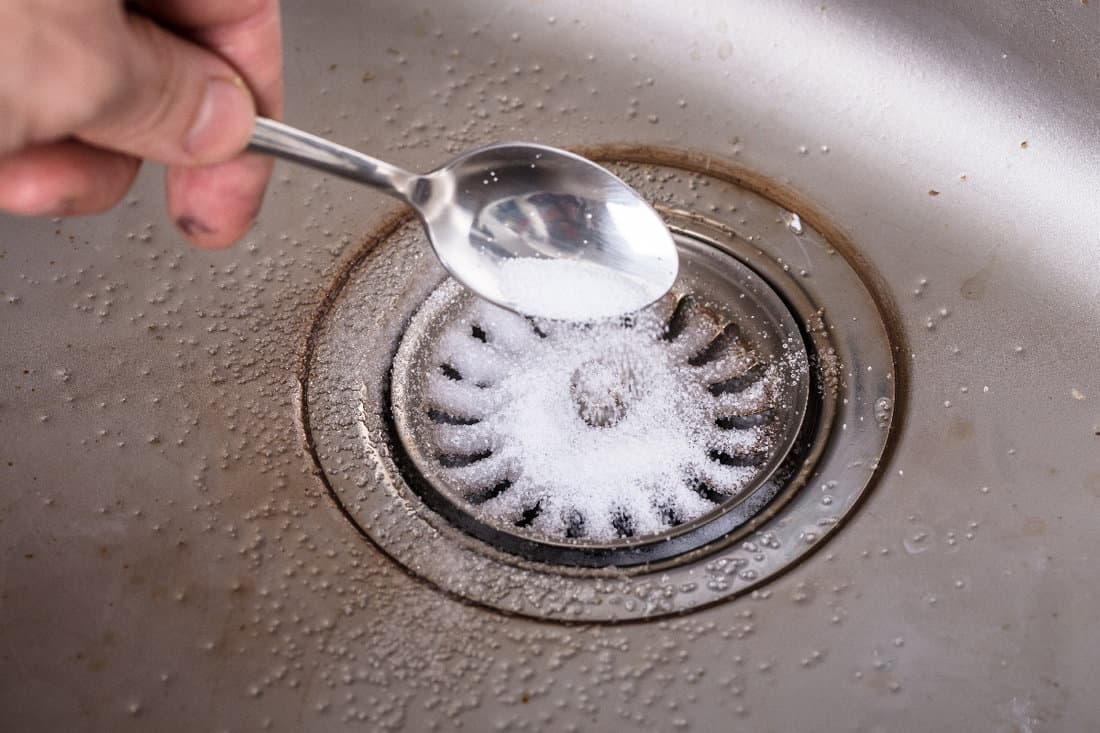
So now you know what all those pesky holes are, but how do you clean them? The good news is, once the faucet holes are filled with your faucet then you don't really need to worry about them anymore. For your drain hole and your overflow hole, you will need something like a pipe cleaner or a sink cleaning brush.
Here's a great set of different sized brushes to get into awkward spaces like your overflow hole on your sink. Click here to see these on Amazon.
Use a funnel made out of something pliable that will withstand heat (like a flat piece of silicone) and pour hot water into the openings. Then use your brush to get the gunk out. To remove odor try pouring 1 part baking soda, then 1 part white vinegar. It may fizz a little. Let it sit for ten to fifteen minutes, then wash it out with hot water. This should take care of any musty smell.
Do Bathtubs Require An Overflow?
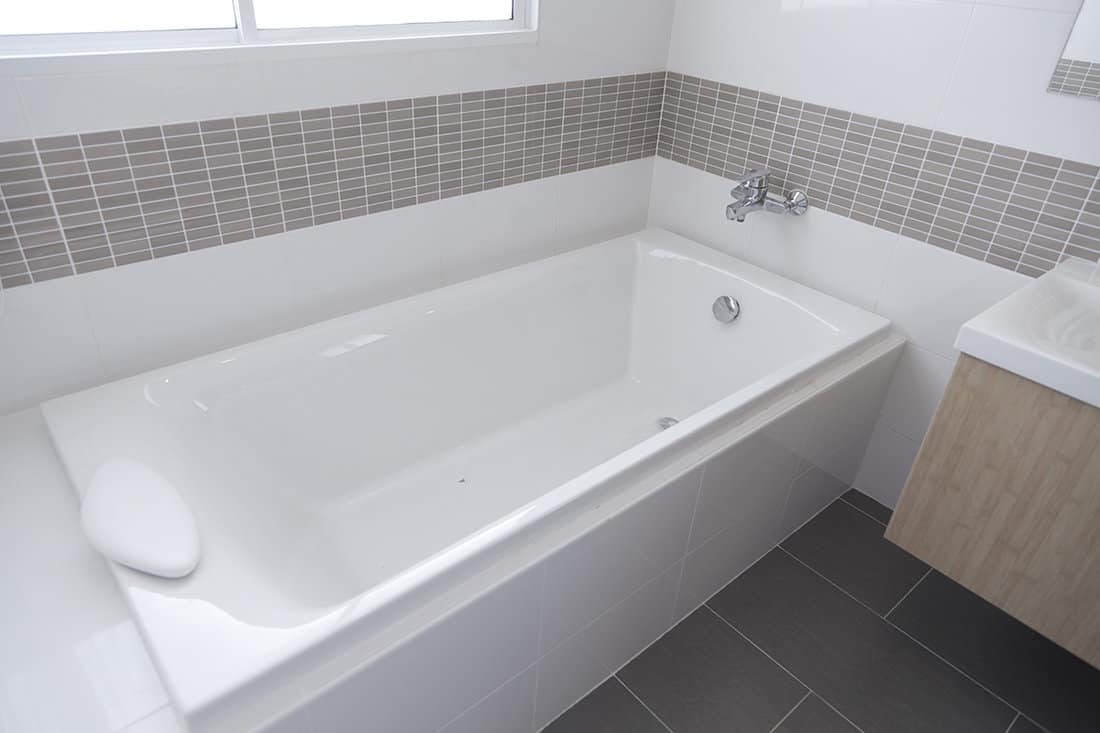
This is a tricky one and it varies from state to state and building code to building code. Your best bet will be to check in with your county inspector BEFORE you buy your tub. Because it gets even tricker. There are tubs sold without overflow valves which would make you think they are not a requirement. But it really boils down to your particular state and maybe even your particular county.
We sure hope all of your bathroom sink overflow questions have been answered. Here are a couple of other great Home Decor Bliss posts that may inspire you around the home:
10 Tips For Organizing and Decorating Your Bathroom Shelves
How To Fix Worn Spots On Kitchen Cabinets










![Marble walled shower wall, 5 Best Types Of Shower Wall Panels To Consider For Your Bathroom Renovation [The Ultimate Guide]](https://homedecorbliss.com/wp-content/uploads/2023/07/shutterstock_2138160219-600x400.jpg)
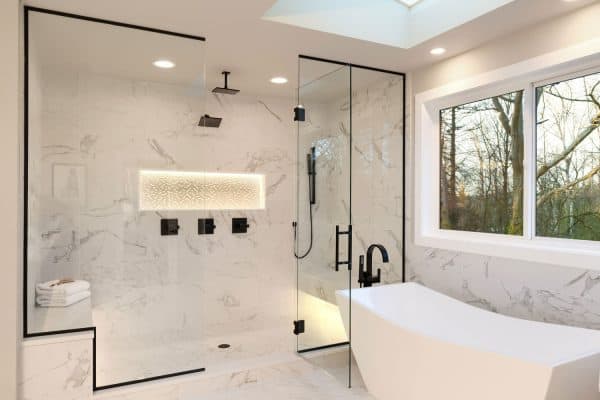
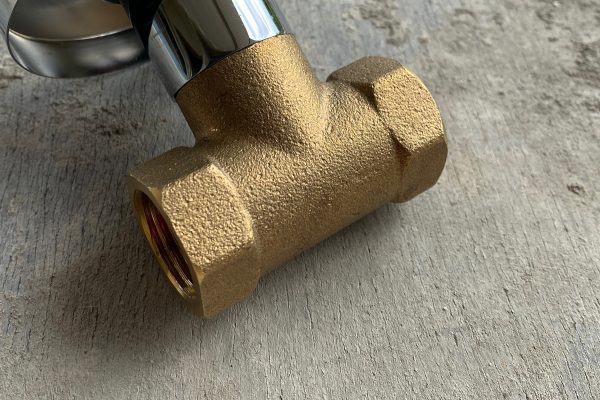
I have a small bathroom but smart. Organizing is the main part to look it large anyway. I tried to maintain it perfectly but failed to do so my younger kids. Still my bathroom is beautiful and your advises will make it more beautiful.
Thank you for sharing this post. I really love reading it.
Great post! Bathroom sinks can be designed with or without an overflow. An overflow is a feature that prevents water from spilling over the sink’s edge and onto the floor in case the faucet is left running or the sink is overfilled. While it’s not mandatory to have an overflow in a bathroom sink, it’s highly recommended to prevent water damage and potential hazards. However, some modern sink designs come without overflows, which can be an aesthetic preference, but they require more attention and care to prevent spills and damage. Ultimately, whether or not a bathroom sink needs an overflow depends on personal preference, practical needs, and the design of the sink.